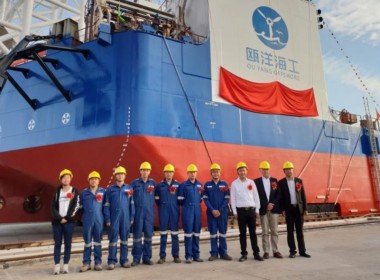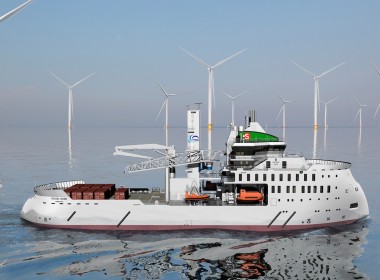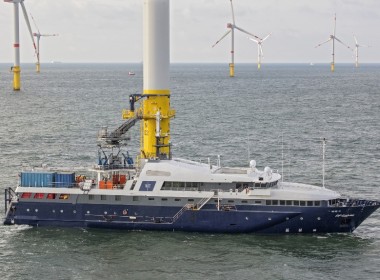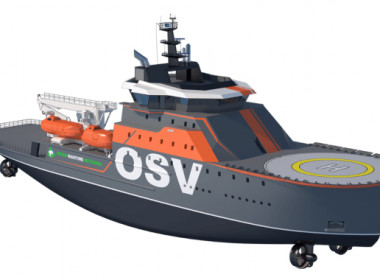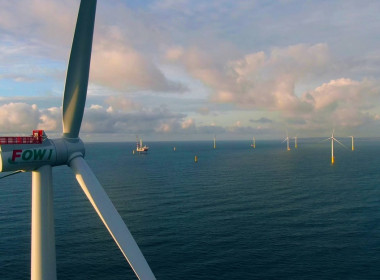VESSEL REVIEW | Ventus Formosa – Crewboat/accommodation vessel for Taiwan’s Formosa 1 offshore wind farm

Ventus Marine, a joint venture of Taiwan’s Ta Tong Marine Group, has recently taken delivery of the world’s first “service accommodation transfer vessel” (SATV).
The 36-metre purpose-built vessel is capable of staying offshore for at least seven days. It offers 12 single cabins with en-suite bathrooms and media entertainment for technicians to live onboard comfortably, without requiring daily port calls.
Ventus Formosa is now providing operations and maintenance support for Siemens Gamesa Renewable Energy in Taiwan on the Formosa 1 offshore wind farm project. She combines both offshore accommodation for technicians, and a fast and efficient vessel that can transfer technicians directly onto an offshore wind turbine without the need for a complicated motion compensated gangway system.
Designer BMT partnered with a Singaporean builder for the 36-metre vessel, with the design aiming to plug the gap where a full size SOV (service operation vessel) would be unsuitable and too expensive.
Seakeeping and efficiency were at the forefront of the project. To develop this unique design, BMT leveraged technologies and experience derived from a number of disparate markets. The hull form is based on a BMT’s stable catamaran platform, which offers improved seakeeping performance, but with a minimal resistance penalty. The improved vessel motion is also complemented by a full active ride control system.
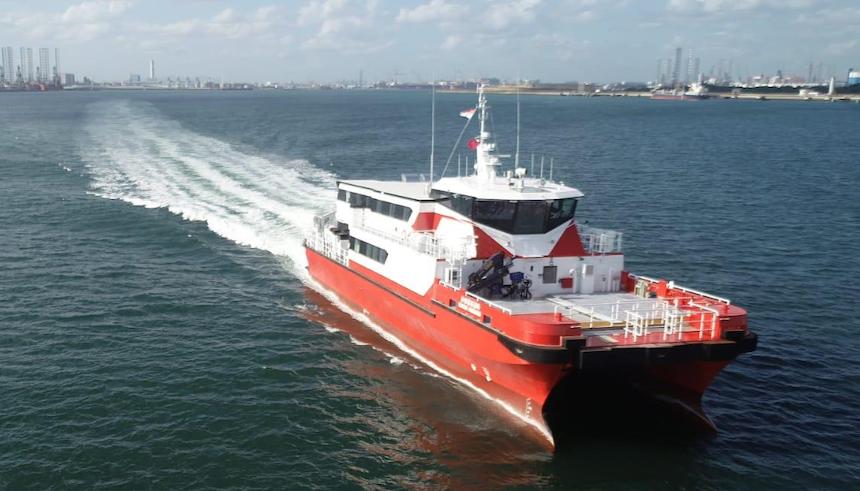
The design also boasts the third generation of BMT’s active fender system. Through substantial investment as part of their R&D program, BMT designed this next generation of the system specifically for larger vessels like the SATV to land on wind turbine generators with a significantly reduced impact load, enabling the safe transfer of service technicians onto the towers.
The 36-metre Ventus Formosa was designed to ensure passenger comfort is optimised by keeping all sleeping accommodation above the main deck where noise levels will be kept to a minimum through the use of a resiliently mounted superstructure, both of which are firsts for a transfer vessel of this size.
Powered by twin MTU 16V2000 engines that are coupled to a Servogear CPP propulsion system, to optimise fuel efficiency during different modes of operation. The new vessel will travel at a sprint speed of 20 knots and cruise at a speed of 16 knots, with a deadweight capacity of 75 tonnes.
For more news, opinion and vessel reviews as part of this month’s Offshore Week, click here



